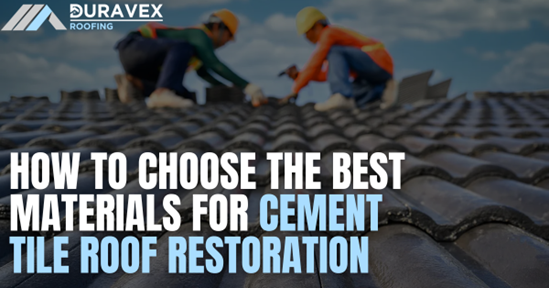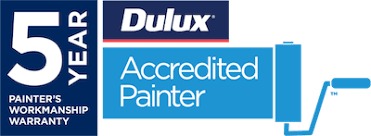Cement tile roofs are known for their durability, longevity, and low maintenance requirements. However, like any other roofing system, they require occasional repairs and restorations to maintain their functionality and aesthetic appeal. Choosing the best materials for Cement Tile Roof Restoration is crucial to ensure your roof stays in good condition for years. This blog will discuss the materials commonly used for cement tile roof restoration and the factors you should consider when selecting them.
Understand The Different Types Of Materials
Regarding cement tile roof restoration, several types of materials are commonly used. These include roofing cement, membrane, roofing underlayment, and roofing tiles. Understanding the differences between these materials is important when selecting the right materials for your restoration project.
Roofing Cement: It is a sealant to fill gaps and cracks in cement tile roofs. It is made from a mixture of cement, sand, and water and is applied using a trowel or caulking gun. Roofing cement can patch small cracks or gaps in the tiles and is often used with other materials.
Roofing Membrane: It is a waterproof material installed over the existing cement tile roof to provide an extra layer of protection against moisture. Roofing membranes are typically made from rubber, PVC, or TPO and come in various colors and textures to match the existing roof. They are highly resistant to water and UV rays and can help extend the roof’s life.
Roofing Underlayment: A layer installed beneath the cement tile roof provides an additional barrier against moisture. Underlayment materials can include asphalt-saturated felt, synthetic underlayment, or self-adhesive underlayment. They are designed to be highly durable and can help to prevent moisture damage to the roof.
Roofing tiles: These tiles make up the cement tile roof. Replacement tiles can be made from cement, clay, or synthetic materials and come in various colors and shapes to match the existing roof. When selecting replacement tiles, choosing a highly durable material that can withstand the elements is important.
B) Consider Your Climate
Your climate is important when selecting cement tile roof restoration materials. If you live in an area with continual rainfall or high humidity, you’ll want to choose materials highly resistant to moisture. This may include roofing membranes and underlayment materials designed specifically for wet climates.
On the other hand, if you live in an area with high temperatures or extreme sunlight, you’ll want to choose materials that can endure UV exposure without cracking or fading. This may include roofing tiles that are made from synthetic materials that are designed to resist UV damage.
C) Evaluate Your Budget
Your budget is another important factor when selecting cement tile roof restoration materials. Some materials may be more expensive upfront but provide greater long-term value by lasting longer or requiring less maintenance over time. On the other hand, cheaper materials may be more cost-effective upfront but may require more frequent repairs or replacements in the future.
When evaluating your budget, it is important to consider the total cost of the restoration project, including the cost of labor, materials, and any additional expenses that may arise.
D) Look For Durability
Durability is a key factor when selecting cement tile roof restoration materials. You’ll want to choose materials designed to withstand the elements that last many years without requiring frequent repairs or replacements. Look for materials with a warranty or guarantee, giving you added peace of mind.
When evaluating the durability of different materials, consider their resistance to water, UV rays, and extreme temperatures. You should also consider the expected lifespan of the materials and any maintenance requirements that may be necessary to keep them in good condition.
E) Consider Aesthetics
Finally, it’s important to consider aesthetics when selecting cement tile roof restoration materials. You’ll want to choose materials that match the existing roof as closely as possible regarding color, texture, and style. This will ensure that the restored roof looks cohesive and visually appealing.
When selecting replacement tiles, look for options that nearly match the size and shape of the existing tiles and their color and texture. Some manufacturers offer custom-made tiles that can be created to match the exact specifications of your existing roof.
If you’re considering adding a roofing membrane or underlayment, look for various colors and textures options. This can allow you to choose a material that complements the color and style of the existing roof.
It’s important to note that the aesthetics of your roofing materials shouldn’t be the only factor you consider. While choosing materials that look good is important, selecting materials that will provide long-lasting protection for your home is even more important.
Conclusion
Choosing the best materials for cement tile roof restoration is crucial for ensuring the longevity and protection of your home. By considering factors such as the different types of materials available, your climate, budget, durability, and aesthetics, you can decide which materials to use for your restoration project.
One brand that stands out for providing high-quality materials for cement tile roof restoration is Duravex. With a range of roofing membranes, underlayment materials, and replacement tiles, Duravex offers products that endure the elements and provide long-lasting protection for your home. Their materials are also available in various colors and textures, allowing you to choose a product that matches the style of your existing roof.
Working with a reputable roofing contractor and using high-quality materials like those offered by Duravex can help ensure that your cement tile roof restoration project is successful and provides reliable protection for your home for many years.










